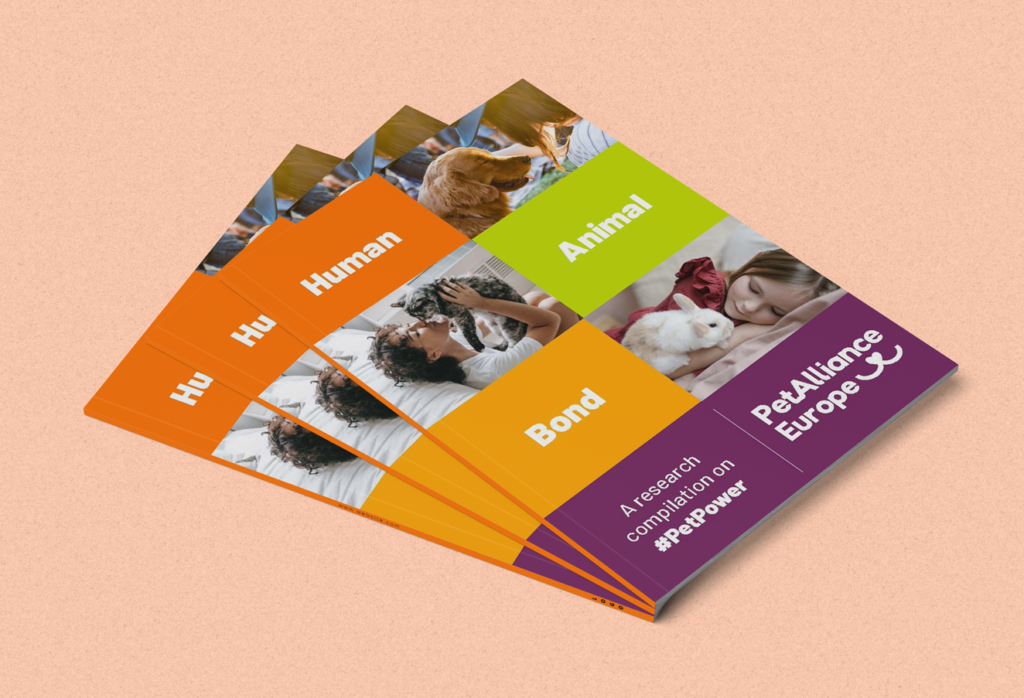We know that assistance animals do amazing work helping people in need. But how exactly are they trained to perform so many different tasks? We asked different service dog associations to tell us more about their work and their training processes and put together a quick overview for you!
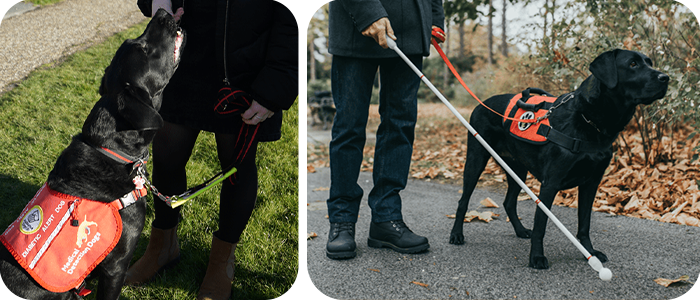
Choosing the puppies
Puppies can be selected to become assistance animals from the age of 2 months. They are chosen according to certain physical characteristics, such as good balance and their personality also plays a key role. Being sociable is really important for a working dog.

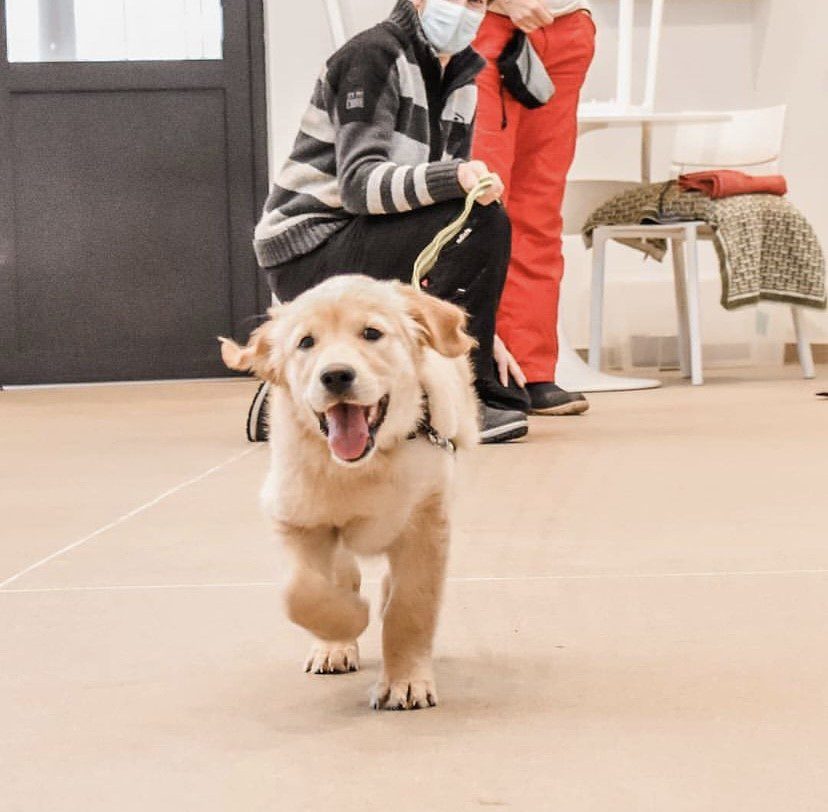
Socialisation
After the initial selection, the puppies are placed with foster families to be socialised. This is a very important part of the process and, the socialiser needs to get out and about quite regularly with their dog! (Who said the perfect job doesn’t exist?) The puppy needs to be introduced to all kinds of different situations they could potentially encounter while working, such as walking through parks or shopping areas, meeting new people and even taking public transport. The first year of a puppy’s life is all about learning — learning basic skills, learning to be a confident, well-socialised dog who is not easily distracted, learning to feel loved and needed. The pups also receive all the veterinary care necessary, including vaccination and parasite control, making sure they grow into healthy and happy dogs.

Training
From 18 months old dogs can start their more formal training process. The tasks and commands the dog will learn varies according to which type of assistance they will provide. For example, a diabetes alert dog will learn to alert their owner of an impending hypo before they are aware of it and retrieve their glucose testing kit. The training process can take from 6 months to a year, depending on the dog’s personality and behaviour and how quickly they pick up the tasks. Trainers can spend hundreds of hours transforming puppies into fully-qualified assistance dogs!
Meeting their people
After they graduate from assistance dog training school, they are ready to enter into and essentially change the lives of their new owners! The associations training assistance dogs will look at their sometimes long waiting list of people requiring assistance and match the newly-trained dog with the person they are best equipped to assist. Sometimes the dog will ‘try on’ a few people until the perfect match is made.
Follow up
After placement, the training association will continue to monitor the dog through regular catch-ups to ensure they are healthy and happy in their new home. They can also provide further support if additional training or education is required. All these important steps help to ensure pawfect partnerships 😉
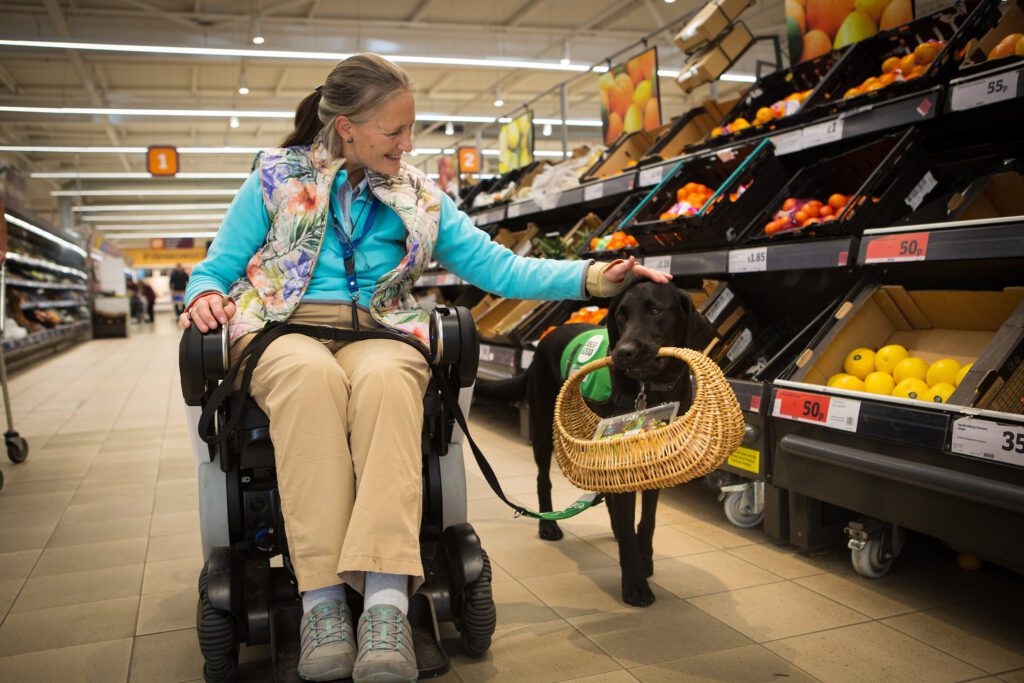
We all know that an animal companion comes with many benefits. Those benefits can be felt even more strongly by those who need it! Senior citizens, particularly those living alone, sometimes look for companionship or a reason to take a walk outside every day, and that’s where our beloved furry friends come in.
But we must never forget that every animal has their needs and it’s important to ensure that those will be able to be met as people get older.
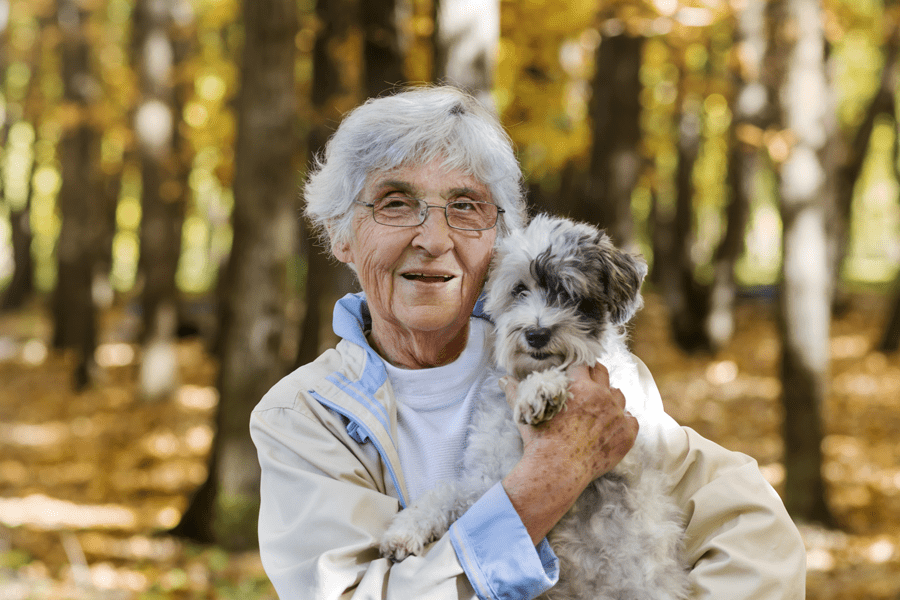
Having a dog
Different dogs need different levels of exercise but smaller breeds are often a great choice for older people as they are easier to handle and safer to take walks with. Small dogs also do well in smaller homes and do not require big outdoor spaces to get enough exercise.
A UK study showed that owning a dog motivates older adults to be more active, supporting healthy aging and improving their quality of life.
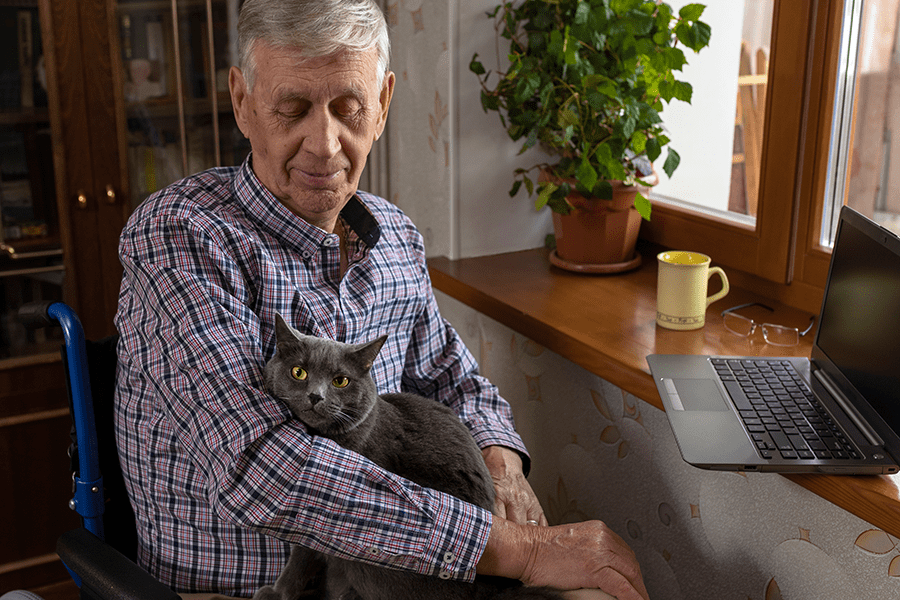
Having a cat
If an older person no longer enjoys the same level of mobility or strength as during their youth for the daily walks required by a dog, but are still looking for a furry friend to care and love, a cat is a great option!
Cats are typically very independent animals and do not need to be walked or taken outside to use the bathroom. But they’ll still provide boundless love and companionship for anyone living alone!
A Dutch/Swiss review of studies showed that pets provide feelings of being protected and safe for elderly pet owners.
Having fish
While having a large aquarium requires a lot of work, a small one can be both colourful and fun to have in the home. Small freshwater fish can make good pet options for older people. Once the aquarium is set up to meet the fish needs, the care of a fish is fairly minimal, especially with the use of automated feeders, water filters and testing kits.
A study from Poland suggested that interacting with fish in aquariums has the potential to benefit human well-being.
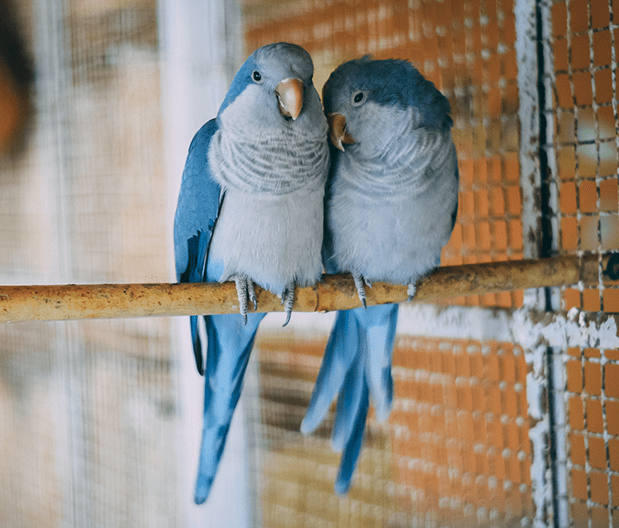
Having a bird
Birds can make great companions with their beautiful colours and singing abilities. But it’s important to consider a few things before getting one: the size of the cage they need, the food required, the noise level of the bird, and the time and attention each species needs. Since their respiratory systems are delicate, then a bird might not be the right fit for you if you are a smoker. A London study showed that birds can improve people’s mood!
Ensuring that your animal companions follow a proper and balanced diet is essential for their overall health and well-being. While it is important to know the distinction between complete and complementary pet foods, it is also crucial to inform yourself on the different nutritional needs of each species of pet. This will ensure that they follow a proper diet as well as enjoy the health benefits from it. Read our blog to learn more about the different nutritional needs of pets and the benefits of good nutrition.
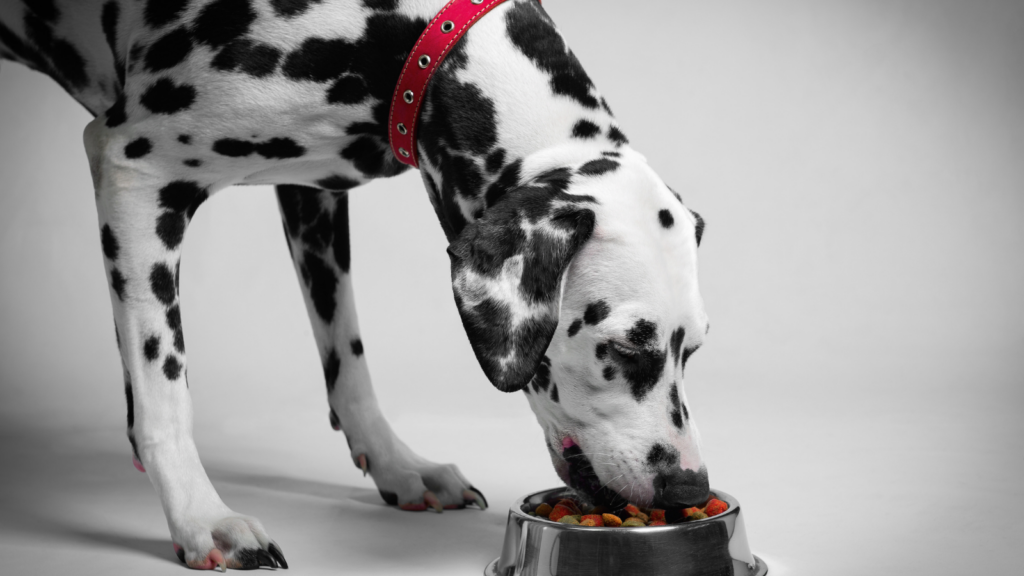
Good Nutrition in Dogs & Cats
Cats and dogs have specific and distinct nutritional needs, which vary by life stage, physical and mental health, and level of activity. Although cats and dogs belong to the same Carnivora order, the dog’s feeding behaviour is omnivorous, while the cat is a true carnivore. So cats must have certain nutrients in their diet that are only found in animal-based ingredients.
In a nutshell, the different food needs for cats and dogs can be summarised as such:
- Dietary proteins: both cats and dogs need proteins for energy, growth and repair of the body. However, cats require a higher amount than dogs during both growing and adult stages. Cats are also less able to down-regulate their rate of protein breakdown when fed a diet low in protein. So make sure to check that proteins are present in high levels in your cat’s pet food before buying it!
- Taurine: this is an amino acid that is distributed throughout most body tissues. While cats must eat preformed taurine from animal-based ingredients, dogs can produce enough taurine from other amino acids to meet their nutritional health needs.
- Vitamin A and B3: both cats and dogs need these vitamins for a healthy vision and healthy skin. Cats can only eat preformed Vitamin A from animal-based ingredients while dogs can also obtain it from plant-based ingredients. For Vitamin B3, cats can only obtain it by eating the preformed vitamin.
- Fatty acid: this is essential for energy production, and cats can only obtain fatty acid, from animal-based ingredients while dogs can obtain it from both animal- and plant-based ingredients.
For more information: https://bit.ly/3pml5pX
Good Nutrition in Other Pets
It’s not only our cats and dogs who require proper nutrition to maintain their overall health, other pets do too!
When it comes to small mammals like hamsters, rabbits and guinea pigs, it’s important to remember that each species has specific nutritional requirements. A hamster needs high levels of animal protein, while guinea pigs have a high need for vitamin C. And carrots should only be given to rabbits as treats and in small pieces due to high sugar levels.
Fish and turtles must be given complete food in flake or pellet form or natural products, and the raw materials have to be selected with care. It’s important to note too that, when it comes to fish, their nutritional needs vary greatly depending on their origins.
Pet birds also have nutritional requirements which are dependent on their different species. Most companion birds are seed eaters but some species, like Robins, eat mainly non-seed diets, including insects, fruit, flowers, leaves and nectar. And we mustn’t forget that pet birds are selective feeders, meaning that they will choose their favourite food only when given a selection. So, make sure to provide a variety of food to your pet bird!
For more information: https://bit.ly/3FIS7qt & https://bit.ly/36qBrbR
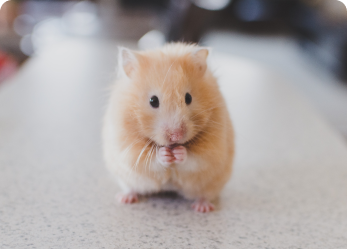
Benefits of Good Nutrition
Ensuring proper nutrition for your pet will also improve their overall health. Indeed, without healthy and balanced nutrition, your pet may lag in performing daily activities and remaining energetic, active and healthy.
Good pet nutrition offers four main benefits:
- Boost for skin and fur health: Pets need the right balance of fatty acids to ensure their skin and fur is healthy. If these nutrients are not provided, your pet’s skin can become dry, resulting in a coat that falls out, splits, or breaks. Fatty acids will help prevent skin problems, reduce irritation and fight inflammation.
- Improved muscle tone and overall body condition: Protein is one of the essential nutrients that your pet needs for building organs, muscles, hair, skin, and other tissues. Your pet’s cells are made of proteins, so they need more proteins to repair damaged cells or create new ones. Ensuring a proper intake of proteins is even more important when your pet is young, growing, or pregnant.
- Disease prevention and immune system support: Vitamins and minerals are essential nutrients in your pet’s diet as they are important for preventing diseases and supporting your pet’s immune system. While many vitamins help reduce damage done to cells of the body, minerals promote the healthy function of the immune system.
- Proper digestion: The carbohydrates in your furry friend’s food are the nutrient that aids proper digestion by supplying the fibre that helps with both digestion and elimination. A food that is easy to digest is important, ensuring your pet can easily use all the essential nutrients found in the food.

Celebrated every February, National Pet Dental Health Month was created by the American Veterinary Medical Association (AVMA) to stress the importance of pets’ oral health. Given the relevance of dental care for the overall health, happiness and wellbeing of pets, it is important to raise awareness on this topic regardless of the continent you are located in. Check out our blog to boost your knowledge on pet dental healthcare, signs of dental diseases and for some tips on how to keep your pets’ teeth strong and healthy.
Why Dental Care Matters for Pets
Often overlooked by pet parents, oral hygiene is paramount for the overall health of your pet. Dental diseases are very common among our four-legged friends, and AVMA estimated that they affect the majority of pets by three years of age. Age is not the only factor associated with dental diseases. The breed can also influence the development of dental diseases, as well as their diet. Flat-faced cats and smaller dog breeds are affected in particular as they tend to have overcrowded or misaligned teeth that are difficult to keep clean.
There are four main ways in which poor dental care can affect your pet’s health:
- Your pet can start developing bad breath or Halitosis.
- If the structures supporting your pet’s teeth become infected, it could result in tooth loss.
- Dental diseases can cause severe oral pain to pets.
- The most dangerous effect of dental diseases is organ damage. This can occur when the bacteria in plaque enters your pet’s bloodstream where it can spread to the heart, kidneys and liver.
To know more about pets’ periodontal diseases, you can also watch this explanatory video by AVMA.

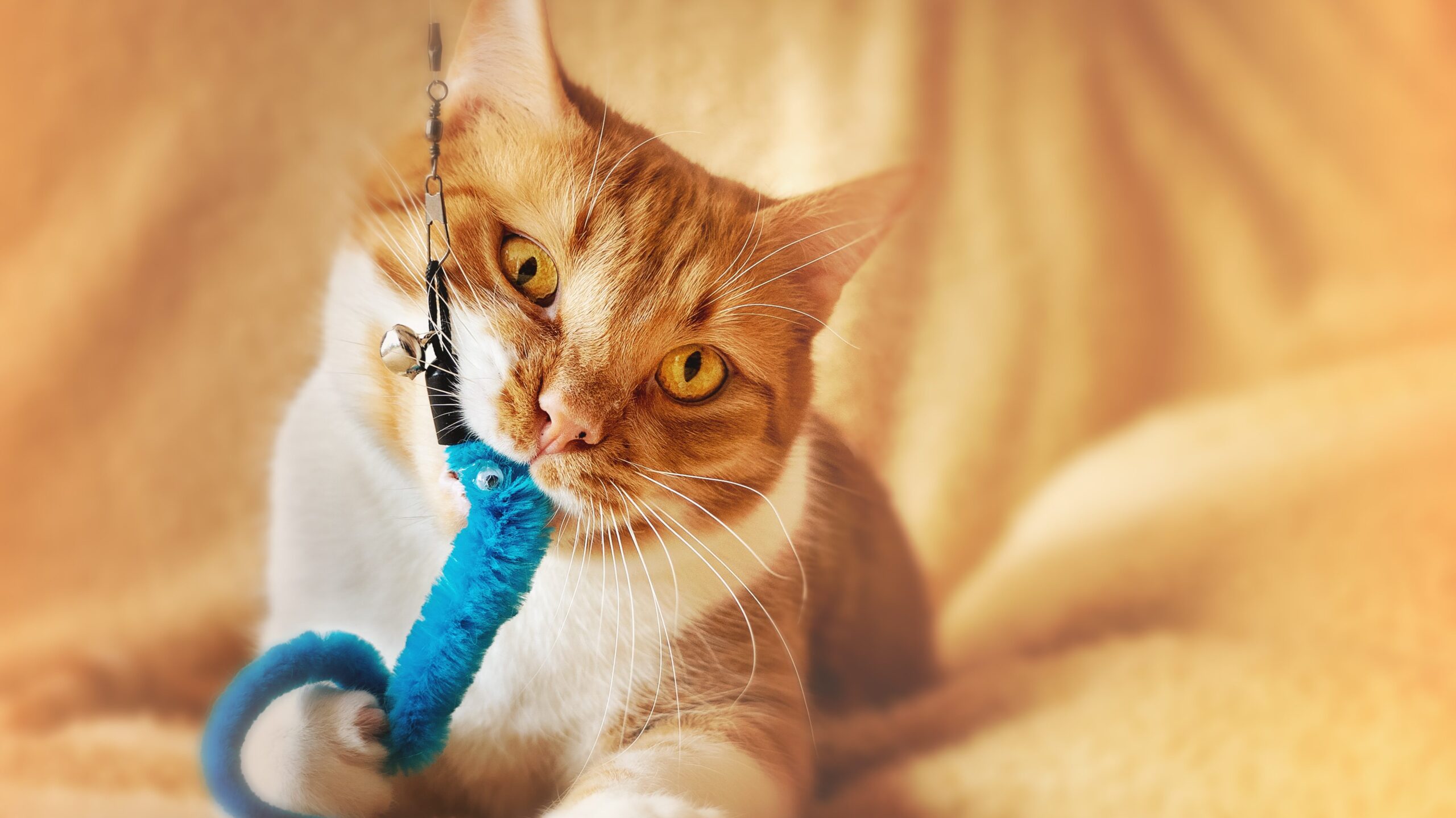
Signs of Dental Diseases in Pets
But what should we look out for to spot dental diseases in pets? The most common signs of dental disease in pets are:
- Yellow-brown tartar
- Bleeding gums
- Red and inflamed gums
- Bad breath or Halitosis
- Difficulty chewing or dropping food when trying to eat
- Excessive drooling
- Change in eating habits
- Pawing at the mouth or rubbing the face against the floor or furniture
If your pet shows any of these signs, you should schedule a vet check-up to prevent any further dental deterioration.
Reactions to these symptoms can vary in frequency and severity depending on your pet. But even if your pet isn’t showing any signs of oral health issues, it’s worth asking your vet during a regular check-up to take a look at the teeth to help prevent potential problems.
Tips for Pet Dental Care
Many associations have put forward Dental Care Guidelines that provide information on oral health issues experienced by pets, especially cats and dogs. You can consult here the Guidelines from AAHA and Global Guidelines from WSAVA.
Generally speaking, here are four tips to ensure your pet’s oral hygiene:
- Brush your pet’s teeth. There are specific products for cleaning your pet’s teeth, and if you are unsure on how to brush your pet’s teeth, you can check out this explanatory video from AVMA.
- Take your pet to the vet. While this may seem obvious, it is very important not to miss any check-ups and ask your vet about your pet’s dental health during the consultation. You can also request professional teeth cleaning for your pet. Remember, prevention is better than cure!
- Give tooth-friendly food. You can ask your vet for advice on the best diet or additional dental chews for your pet’s oral hygiene.
- Provide appropriate toys. You can ask your vet for recommendations on toys and other treats that are kind to teeth.
So, how much did you learn about your pet’s dental health? Take this quiz to find out!
Today is Blue Monday, which has been dubbed as the gloomiest day of the year. While the scientific proof of this recurrence is arguably debatable, it is a valuable opportunity to share awareness on mental health issues. This is especially true considering the toll on mental health that Covid-19 and its consequences have caused on many people. However, research has shown that companion animals are valuable assets to alleviate mental health issues.
So, can the benefits of the human-animal bond or #PetPower help brighten this Blue Monday?
Blue Monday
Taking place every year on the third Monday of January, Blue Monday is allegedly the saddest day of the year. The term was first coined in 2005 by Dr Cliff Arnall and is purported to be based on an equation including various factors such as average temperature, days since the last payday, days until the next bank holiday, average hours of daylight, and the number of nights in during the month. Despite originally being conceived as a marketing tool to encourage people to book holidays, the term has since gained popularity and moved into common parlance, particularly as mental health awareness grows.

Mental Health Issues and Covid-19
Such awareness days have arguably offered a valuable opportunity to shed light on the issue of mental health, especially after the Covid-19 Pandemic. Researchers believe that the pandemic and its consequences, such as lockdowns, have clearly harmed people’s mental health.
To understand the impact of the virus on mental health, a study collected data from 200,000 European citizens. Thanks to the collaborative network COVID-Minds, scientists gathered and analysed these data from four different countries (Denmark, France, the Netherlands, and the UK) between spring and early summer of 2020. This project focused on mental health factors, such as anxiety and loneliness, since psychological stress is a risk factor for long-term and severe mental illness. The study results revealed that the highest levels of loneliness were observed among young people and people with pre-existing mental illnesses.
Covid-19 isn’t the only thing causing challenges, seasonal affective disorder (SAD) can also play a role at this time of year. SAD is “a type of depression characterised by its recurrent seasonal pattern, with symptoms lasting about 4 to 5 months per year“. This mental health issue is especially common when winter starts, and people begin feeling blue as the days become shorter and there is less light.
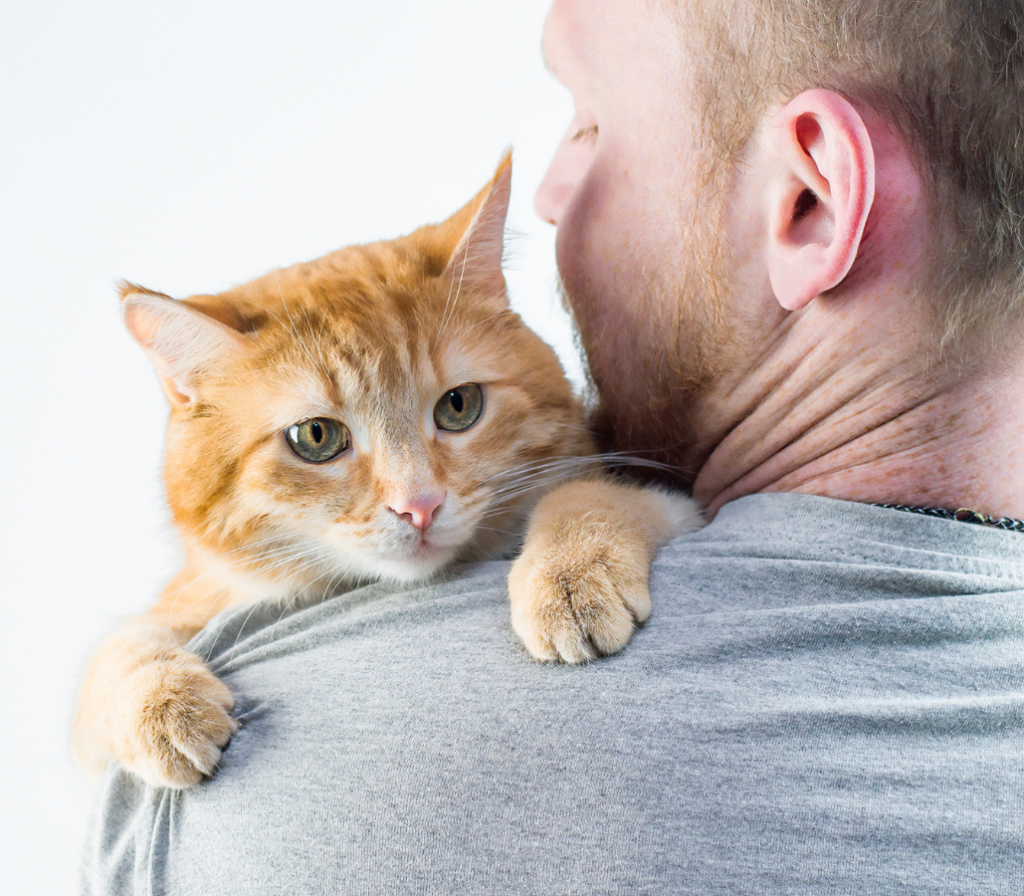
The Mental Health Benefits of Owning a Pet
To fight the gloominess of Blue Monday, some people turn to pet therapy. In 2019 for example, pop-up puppy parks took over the entrances of six office buildings in Toronto, Canada. The Centre for Addiction and Mental Health (CAMH) organised this initiative, with a view to uplifting the spirits of office workers in downtown Toronto through some puppy power! The event was a success, and it also helped spread awareness about mental health issues.
The human-animal bond offers potential benefits for mental health issues. #PetPower can create favourable emotional, psychological, and physical interactions between people and animals that positively shape societies and communities. And this is not just anecdotal information, as many peer-reviewed studies have confirmed several benefits created by the human-animal bond.
We highlight key findings from four of these studies in our booklet:
- A UK review of studies showed that pets provided calming support and were perceived to have a sense of when they were needed.
- An Austrian paper highlighted the potential for dogs to boost self-esteem and act as excellent social lubricants by connecting people.
- Companion animals were also reported to alleviate loneliness in a study conducted in the Netherlands.
- A British study demonstrated that pets constitute a valuable source of support for managing feelings by offering a distraction from symptoms of illness and upsetting experiences.
Clearly, companion animals can help lessen negative feelings and brighten up your mood. #PetPower should definitely be considered a valuable asset to fight the gloominess of Blue Monday as well as mental health issues.
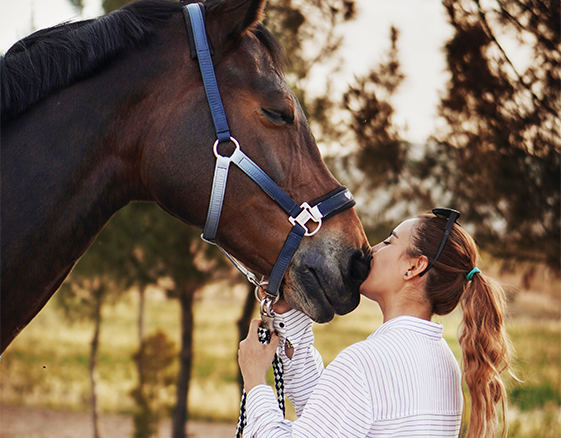
Christmas is coming up, and people’s desire to come up with the perfect gift for their loved ones is a top priority. More and more people see giving pets as presents an exciting gift that keeps on giving. However, this increasingly popular practice comes with a number of warnings from various animal charities, such as the British organisation Dogs Trust who regularly promotes the slogan ‘A dog is for life, not just for Christmas’.

Dogs Trust
Dogs Trust is the UK’s largest dog welfare charity and has branches in other countries, like Ireland. The organisation’s primary objective is to protect all dogs from mistreatment, cruelty and suffering. Moreover, it focuses on the rehabilitation and rehoming of dogs that have been either abandoned or given up by their owners. Indeed, on their website, people who want to adopt a dog can find numerous dogs in need of a new loving home. The charity annually spends time urging the public to avoid buying or giving dogs as presents for Christmas and has created several TV adverts for this purpose “A dog is for life, not just for Christmas”.
‘A dog is for life, not just for Christmas’
One such ad by Dogs Trust’s from 2019 features a little animated dog made of cork that arrives on Christmas day. While the puppy initially receives plenty of attention during the festivities, it is then thrown away without a second thought as the family clears up the Christmas wrappings and decorations, etc. The cork dog turns into a real dog as it shown in an abandoned cardboard box of Christmas rubbish the following day. Fortunately, someone rescues the dog and brings them to a local Dogs Trust branch.
Think before you buy or adopt
This ad and other campaigns like it are a great way for animal charities to get the message across that purchasing or adopting a dog or any other animal should never be done on a whim for yourself or your family, or as a surprise from someone else if you are not sure that they have the time, the means or the desire to care for a living being. Dogs are not just a gift that can be thrown away with the rubbish and the leftovers from end of year celebrations.
They really are a lifetime commitment.
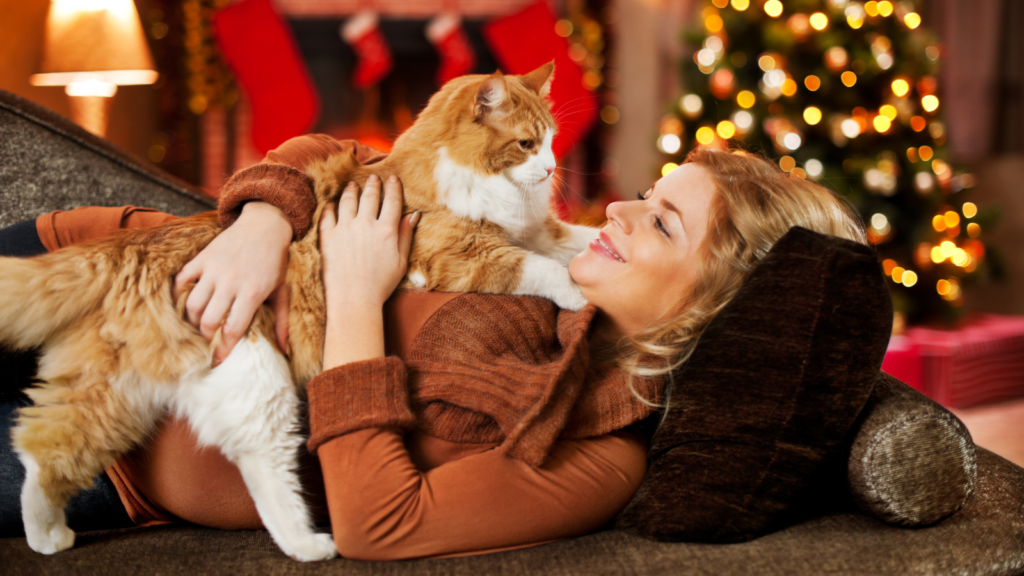
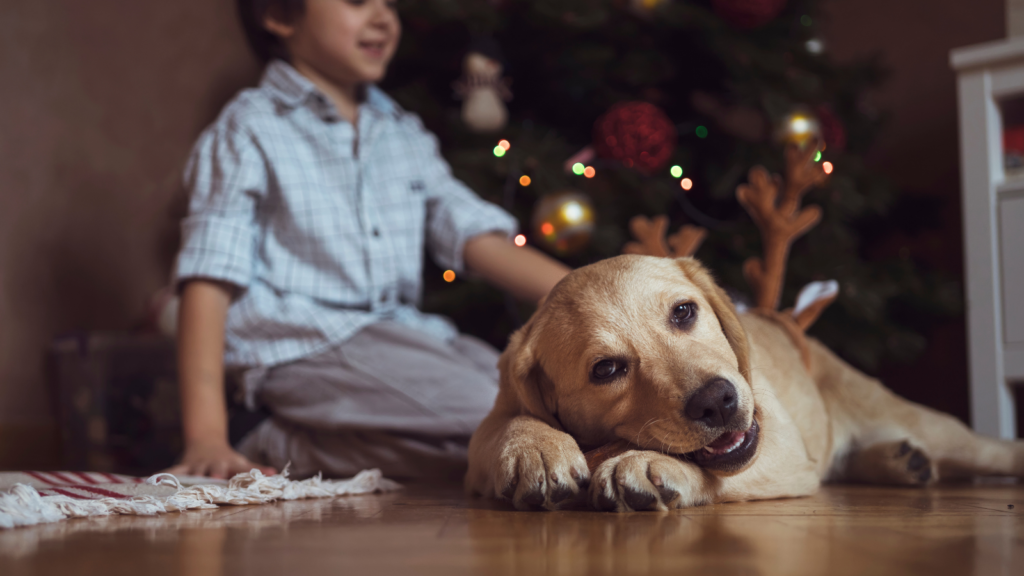
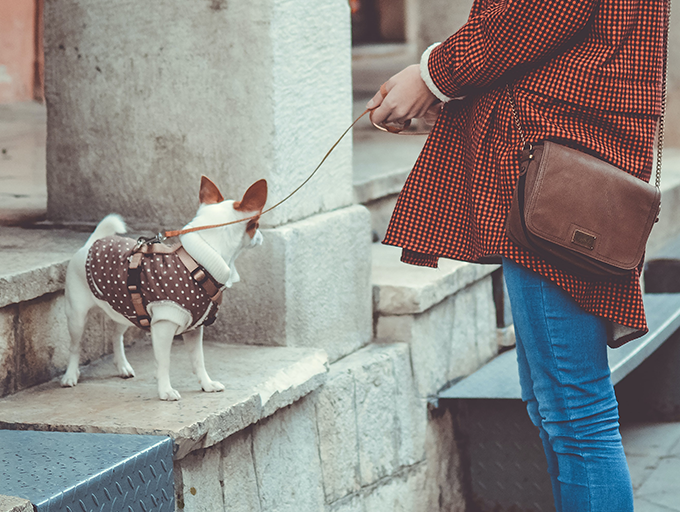
Winter is quickly approaching as well as the low temperatures accompanying the coldest season of the year. Just as we feel the chills of the cold winter weather, we should also remember that our pets most likely dislike the chilly days too! Read this blog for some tips and tricks on how to keep our animal friends warm during winter temperatures.
Keep your Pet(s) Warm and Indoors when Possible
While it may seem like an obvious suggestion, this action may be tricky to carry through, especially for pets who really enjoy being outdoors. Responsible pet owners need to be very attentive and not leave their furry friends unsupervised outdoors during freezing temperatures. Our animal friends can be at risk of frostbite and hypothermia when they are outside in freezing weather for prolonged periods. Nonetheless, pets such as dogs, should still get regular trips outdoors to exercise and for daily walks.
Be Cautious when your Pet is Outside Often
For pets with no or short hair, wearing overcoats may help to keep them warm. If your four-legged friend is comfortable with wearing pet clothing, consider getting a high-quality pet overcoat so your pet can feel the benefit. And it may look a bit funny, but pet booties can also be extremely valuable in protecting them not only from the cold footpath but also from salted icy footpaths which may harm your pet’s paws. If you have a garden where your pet enjoys spending time, you can also build your pet a shelter. This shelter must be big enough to allow them to be comfortable but also small enough to avoid body heat escaping. Additionally, any pet shelter should ideally be raised from the ground, waterproof and not directly facing the wind. Examples of well insulated houses that you could build or buy for your dog can be found here.
Make Sure that your Pet has Plenty of Food & Water
Don’t be surprised if your four-legged friend’s appetite strikingly increases during the coldest season of the year. Indeed, pets generally need more food to keep them warm during colder temperatures as their body depletes more energy. Additionally, remember to check that the water you provide them with did not freeze over. Lastly, with low temperatures, plastic bowls for food and water are the safest choice as your pet’s tongue could get frozen onto metal bowls.
Be Aware of Potential Antifreeze Poisoning or Other Health Hazards
While antifreeze is a deadly poison, it also has a sweet taste that could attract your furry friends. Be extremely careful of this health hazard and make sure to store any antifreeze you may have out of reach and always wipe up any spills. If your pet ingests this liquid, they could have various reactions, such as being hyperactive, nauseous, lethargic, to name a few. Keep an eye out for these behaviours and make an appointment with your vet if your pet starts showing these symptoms. Furthermore, pet owners should also be aware that certain chemicals used to clear snow can cause dangerous irritations to their pets’ fur. To limit the risk, avoid frequent bathing of your furry friend as this can deplete the essential oil in their coat.
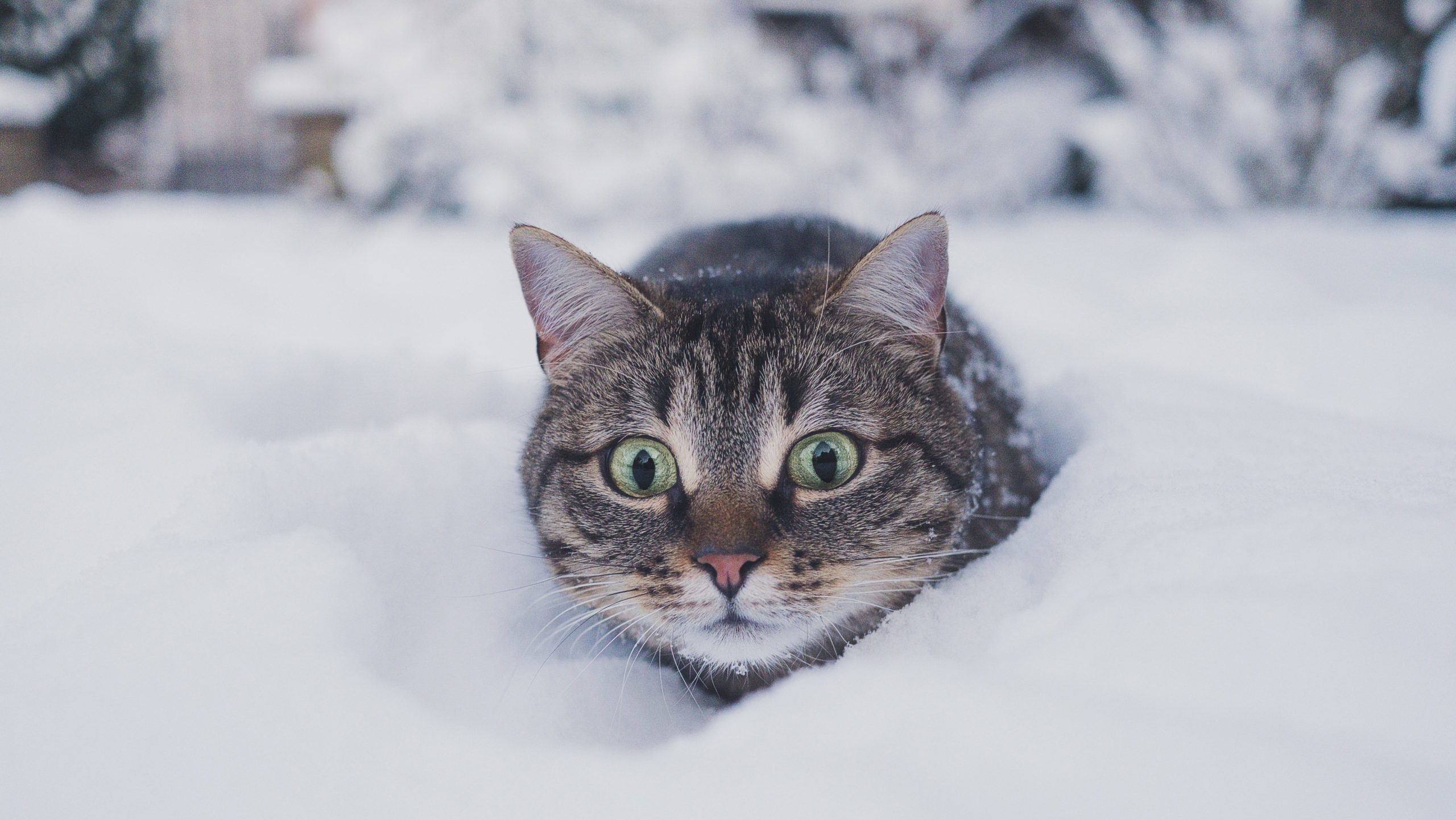
Be Aware of Strays and Wildlife in your Neighbourhood
While you should definitely be extra careful about your household companions, you should also keep an eye out for wildlife or strays who may be feeling the negative effects of chilly temperatures. For instance, during winter, you should always check under your car before starting the engine as this space can be a tempting shelter from the cold, especially for stray cats.
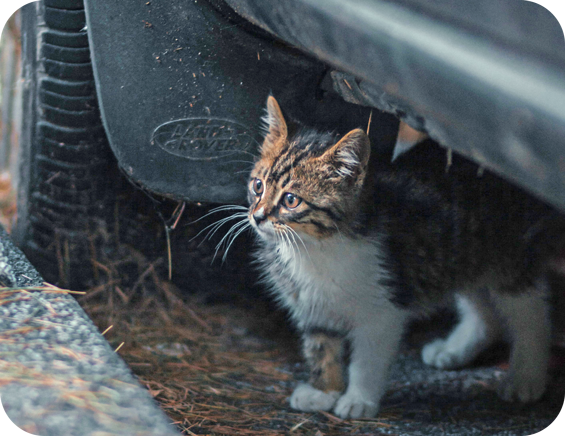
The Pet Alliance Europe booklet on #PetPower is a brief compilation of the human-animal bond research carried out by European scientists. In it we introduce our concept of #PetPower, explaining what it means and highlighting some of the benefits that interactions between pets and people create for individuals and society at large.
Scientific research highlights the benefits of the human-animal bond, and findings to date confirm the significant social and societal potential that this bond offers. One aspect that #PetPower affects positively is physical health. Research has shown that pet ownership can lead to higher activity levels, reduction of feelings of depression in cancer patients, lower risk of heart attack recurrence and much more. Furthermore, our mental health can also draw benefits from having a pet in our home, as studies reveal that companion animals can alleviate loneliness, provide calming support, boost self-esteem and connect people who feel socially isolated. Child development is also positively affected. Interactions with pets can help facilitate language acquisition and potentially enhance verbal skills in children. Finally, #PetPower can play a role in healthy ageing. Studies highlight that an animal presence can reduce behavioural disturbances in people with dementia and stimulate increased rates of social contact amongst older adults.
Given this wide range of benefits, Pet Alliance Europe believes that investigating the benefits of the human-animal bond would be an important focus area for Horizon Europe research funding projects.
